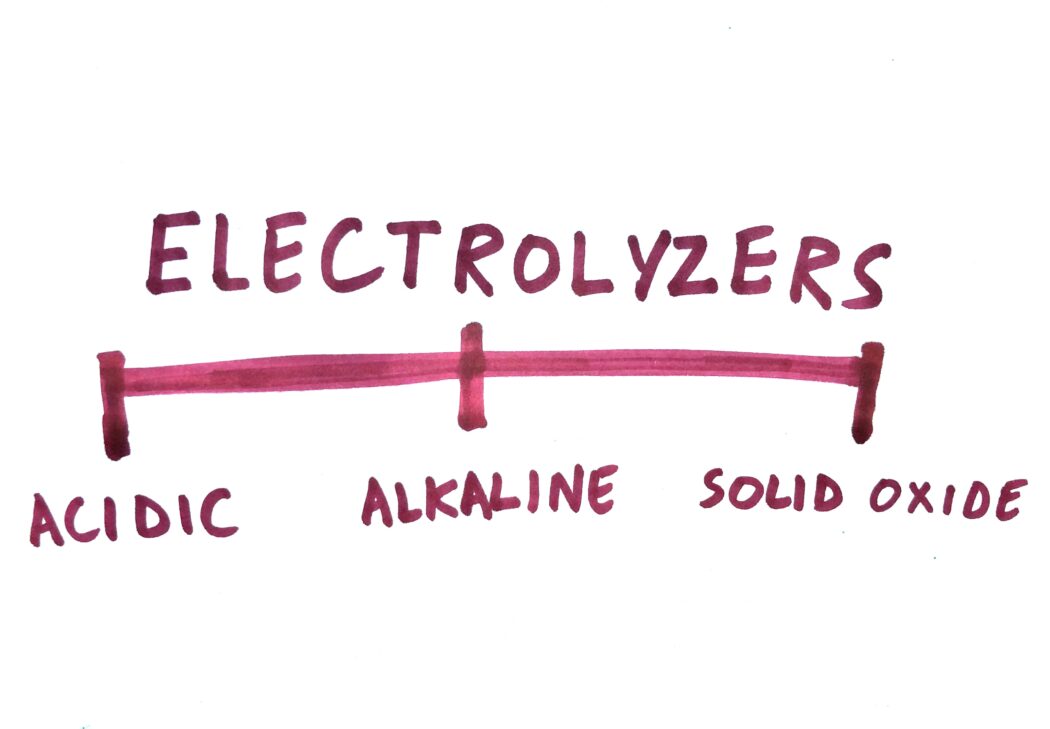Different Types of Electrolyzers
In our previous post we discussed how electrolyzers work. Today, we will work on broadening our electrolyzer knowledge and understand the different type of electrolyzers.
Generally, there are three different types of electrolyzers, i.e. Polymer Electrolyte Membrane, Alkaline and Solid Oxide Electrolyzer cells.
Acidic (PEM: Polymer Electrolyte Membrane)
The polymer electrolyte membrane (PEM)-based electrolyzer is very popular, and many modern electrolyzers are built with PEM technology. The PEM electrolyzer uses the same type of electrolyte as a PEM fuel cell. The electrolyte is a thin, solid ion-conducting membrane, which is used instead of the aqueous solution. Hydrogen produced by this type of electrolyzer is highly pure.
Alkaline (AEL)
Alkaline electrolyzers usually use an aqueous potassium hydroxide solution as the electrolyte. Other frequently used electrolytes include sulfuric acid, sodium chloride and sodium hydroxide. The typical concentration of an electrolyzing solution is 20 – 30 weight % to provide a balance between ionic conductivity and corrosion resistance.
Solid oxide (SOEC) electrolyser cells
A Solid Oxide Electrolysis Cell (SOEC ) is basically the corresponding fuel cell (Solid Oxide Fuel Cell – SOFC) run in ‘reverse’. Such a cell operates at relatively high temperatures (700-1000 °C), which makes the efficiency very high. Therefore, High-temperature solid oxide electrolyzer cell (SOEC) has great potential for efficient and economical production of hydrogen fuel.
Electrolyzers have a promising future as an alternative to fossil fuels because of the latter’s exhaustibility and adverse environmental effects.
So, stay tuned for more interesting articles. In the meantime, check our previous posts on using electrolyzers to colonize Mars!

